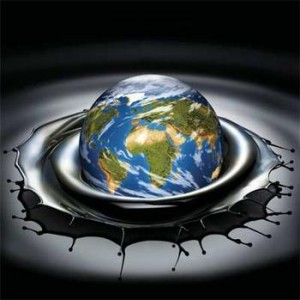The US and Canada are pushing the envelope on oil and natural gas production as both nations strive to become less dependent on foreign sources of energy.
 The use of predictive analytics is playing a critical role in helping energy companies across the world identify potential locations for rich energy deposits along with ways to extract crude oil and natural gas reserves in previously hard-to-reach locations.
The use of predictive analytics is playing a critical role in helping energy companies across the world identify potential locations for rich energy deposits along with ways to extract crude oil and natural gas reserves in previously hard-to-reach locations.
Canada is ranked third in the world with proven oil reserves and is also ranked as the world’s third-largest producer of dry natural gas, according to the U.S. Energy Information Administration.
The US, meanwhile, ranks 13th in the world in proven oil reserves and 5th in natural gas, according to the CIA World Factbook. And the US is expected to be world’s largest producer of natural gas by 2015 and the world’s leading producer of oil by 2017, according to the International Energy Agency.
While no one really knows how much crude oil and natural gas remains to be discovered, energy explorers are pushing the use of analytics and other technologies to try to determine where on earth – or, more precisely, where beneath the earth – the greatest sources of untapped energy lies.
One of the most significant recent discoveries has occurred on a continent that is beginning to attract a great deal of attention in the energy community – Australia.
The results of recent data analysis from two firms – DeGolyer and MacNaughton (D&M) and Gustavson – have confirmed the significant oil and gas potential of the three formations of the Arckaringa Basin discovered by Linc Energy Ltd.
The “unrisked” prospective resources for unconventional reservoirs in the Arckaringa Basin have been estimated by Gustavson to hold 233 billion barrels of oil equivalent and 103 billion barrels of oil equivalent by D&M.
In fact, the discovery might well be a “game changer” that could tip the balance of power financially, politically, and possibly even militarily, according to Kent Moors, an energy advisor to MoneyMorning.com as well as to governments including China and the US.
Africa has also become a hotbed of energy exploration. Four of the five largest oil and gas discoveries in the world in the past year have taken place off the African nation of Mozambique, according to The New York Times.
Italian energy company Eni has recently announced that it has found roughly six trillion cubic feet of natural gas beneath the waters off Mozambique. Eni has also announced three other discoveries off Mozambique.
The use of analytics and other technologies may also help reveal crude oil and gas deposits in other corners of the world. For instance, some of the biggest shale opportunities currently lay outside of North America, according to Peter Dupont, an oil and gas analyst at Edison Investment Research in London.
“The most interesting area, arguably, is Argentina,” he notes. That’s due to its substantial resources and partly because its shale formations are “laterally continuous” as they are in the US, helping to make drilling and extraction much easier, he says.





